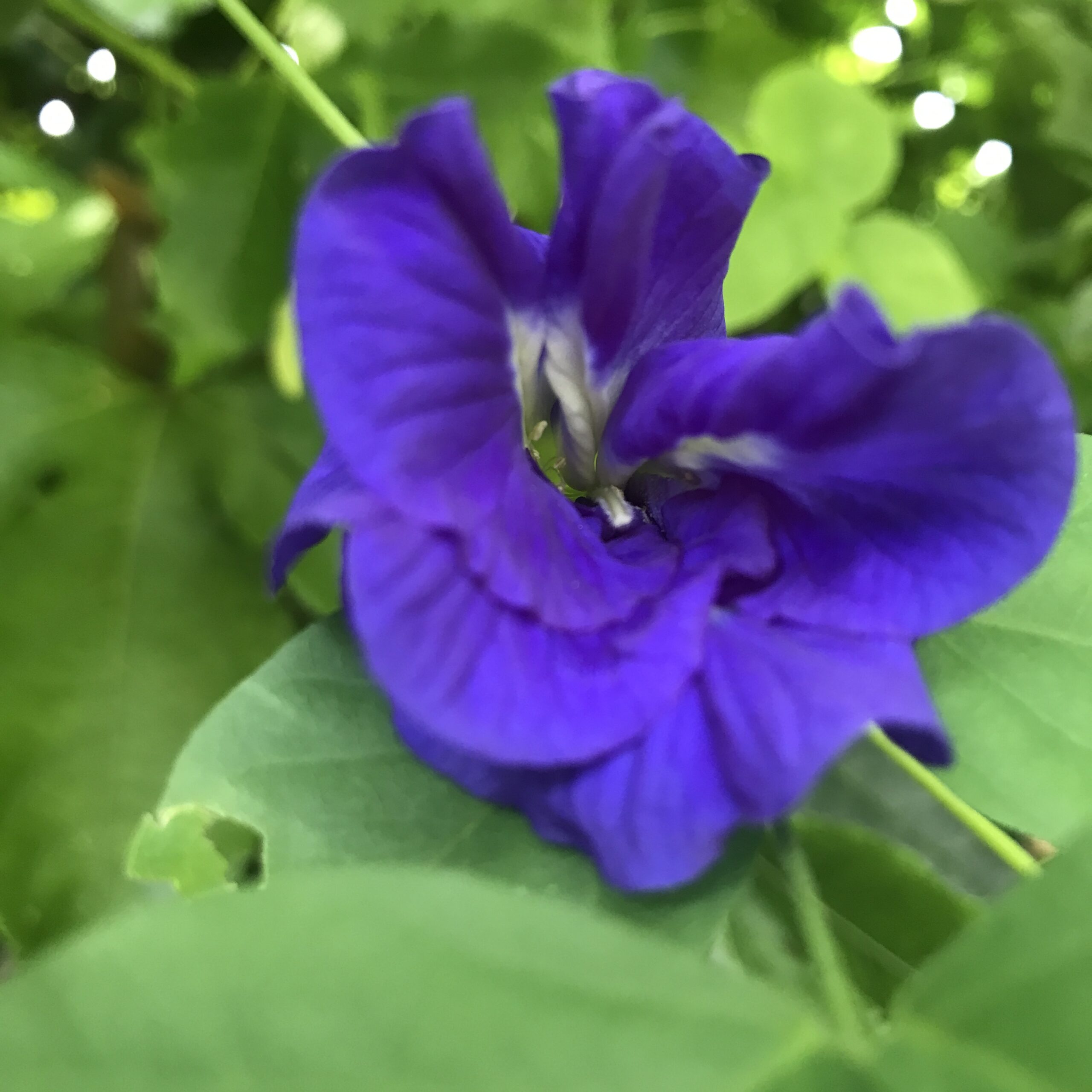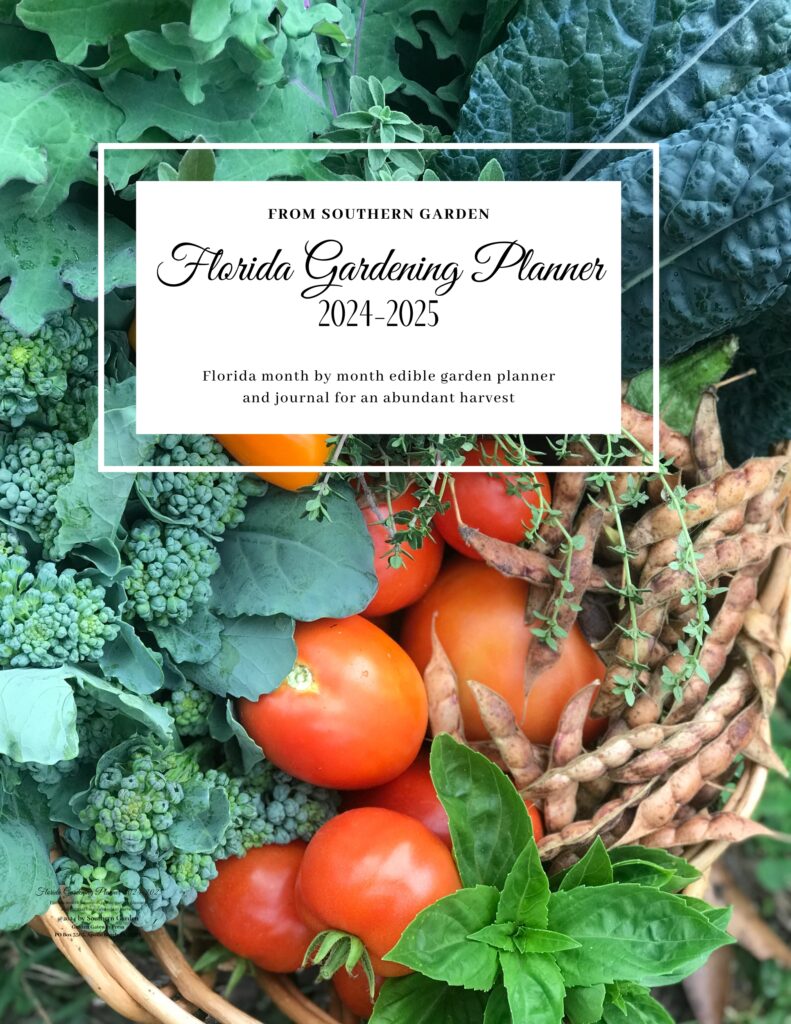The Blue Butterfly Pea Vine, or Clitoria ternatea, is a captivating spectacle in any garden. Known for its striking deep blue flowers, which resemble the shape of a butterfly, this tropical vine is a favorite for its unique aesthetic and herbal qualities. Growing Blue Butterfly Pea Vine from seed can be challenging, but is a skill very much worth mastering.
Reaching a mature height of up to 15 feet and a spread of 3 to 4 feet, it’s an ideal choice for adorning trellises, arbors, and fences, offering a lush and vibrant display. While it flourishes in the warmth of USDA Hardiness Zones 9 to 11, gardeners in cooler climates have found success in growing it too.
In zones 3-8, the Blue Butterfly Pea Vine is often cultivated in containers. This approach allows gardeners to enjoy its beauty outdoors during the warmer months and then easily move it indoors to protect it from colder temperatures. As a container plant, it adapts well to indoor environments, making it a versatile addition to both outdoor gardens and indoor spaces.
Beyond its ornamental appeal, the vine’s flowers are prized in teas and culinary creations, noted for their ability to change color when combined with acidic ingredients. This makes the Blue Butterfly Pea Vine not only a visual delight but also a conversation starter in culinary experiments.
When to Start Blue Butterfly Pea Vine from Seed

Timing is crucial when starting Blue Butterfly Pea Vine from seed. Here’s when to begin, depending on your USDA Hardiness Zone:
In Zones 3-8
Start seeds indoors at least 8-10 weeks before the last expected frost date if you plan to grow them in a container to enjoy outdoors over the summer. This early start is necessary to ensure that the plants are strong enough to be moved outdoors after the frost danger has passed.
While Blue Butterfly Pea Vine may grow back after a freeze, we recommend only growing it in a container in Zones 3-6.
In Zones 9-12
It’s beneficial to start seeds indoors during the winter because Blue Butterfly requires plenty of heat to germinate. Begin 4-6 weeks before planting them out.
During the spring and summer, you can sow them undercover to prevent them from washing out from heavy rains and ensure they stay warm.
You also have the option to direct sow the seeds in the garden. However, this should be done only after the soil has warmed up sufficiently, typically in late spring.
For all zones, starting Blue Butterfly Pea Vine seeds indoors or under cover in a greenhouse allows for better control over the growing conditions, ensuring stronger and more resilient plants. Once the seedlings have grown strong enough and the outdoor temperatures are consistently warm, they can be transplanted outside.
Preparing Blue Butterfly Pea Vine Seeds for Planting
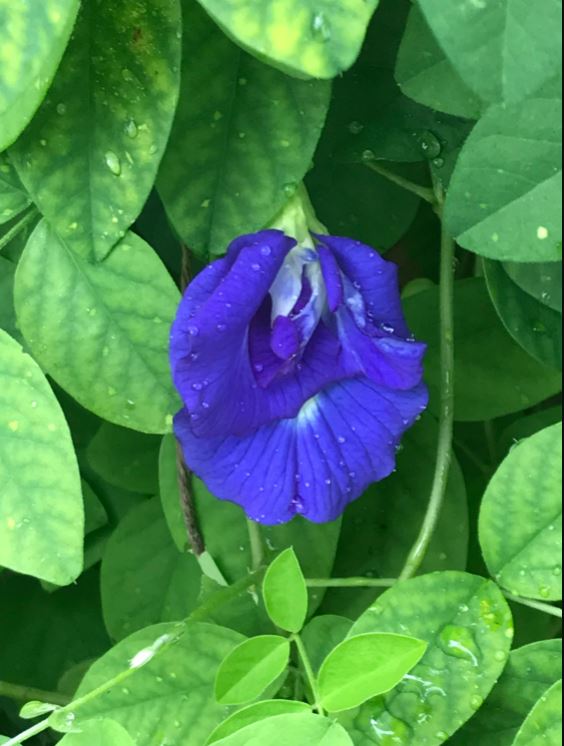
Blue Butterfly Pea Vine (Clitoria ternatea) seeds benefit from being nicked and soaked before planting. Here’s how to do it:
Nicking the Seeds
Gently nick or file a small part of the seed coat. This process, known as scarification, helps water penetrate the seed coat more easily. Be cautious not to damage the inner part of the seed.
Using a small file or a piece of sandpaper, lightly rub one spot on the seed coat until a slight discoloration or change in texture is visible. You can also nick the seed with an Exacto knife or razor blade.
Soaking the Seeds
Once nicked, place the seeds in a bowl of warm water. Temperatures up to 100°F is sufficient.
Duration of Soaking
Allow the seeds to soak for up to 48 hours. Check the seeds occasionally during this period. You may notice them swelling or starting to split open, which indicates they are absorbing water and beginning the germination process.
Once the soaking period is complete, gently remove the seeds from the water. They are now ready to be sown in your prepared seed starting mix or in the ground.
How to Start Blue Butterfly Pea Vine Seeds
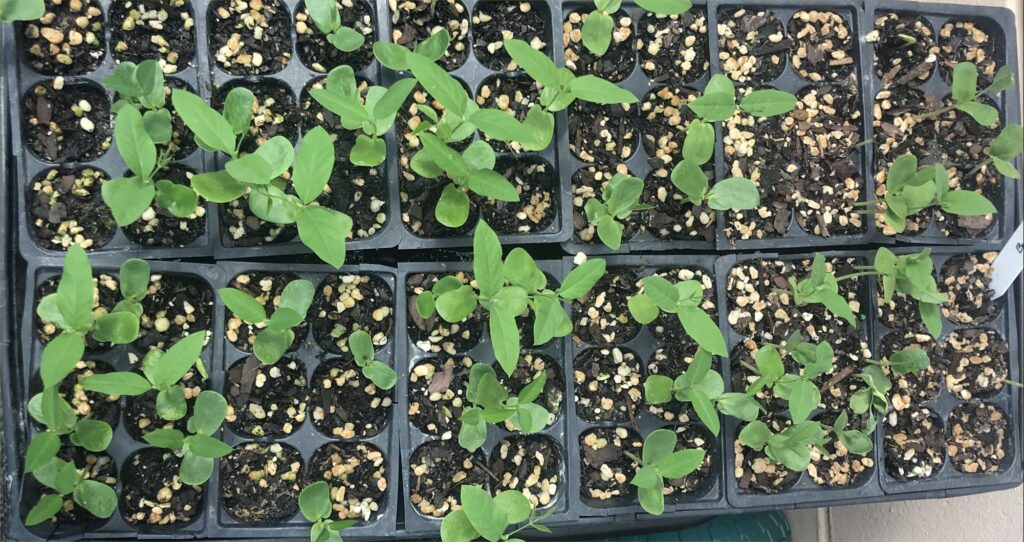
Growing Blue Butterfly Pea Vine from seed successfully requires a careful approach. Here’s a guide to help you begin:
Choosing or Making a Seed Starting Mix
Select a seed starting mix that is light and well-draining, which is essential for Blue Butterfly Pea Vine seeds. You can create your own mix by blending coconut coir, perlite, and compost in equal parts. This mixture will provide the right balance of aeration and moisture retention needed for germination.
Choosing Containers for Starting Seeds
Since Blue Butterfly Pea Vine has a relatively long taproot, choose containers that are deeper than typical seed starting trays. Pots or soil blocks that are at least 3-4 inches deep are ideal. This depth allows the roots to grow freely without becoming cramped or bound.
Depth to Plant
Plant the pre-treated seeds (nicked and soaked) about 1/2 inch deep in the soil. This depth ensures that the seeds have enough soil cover to retain moisture while not being so deep that they struggle to emerge.
Moisture Requirement for Seeds
Keep the soil consistently moist but not waterlogged. Overwatering can lead to seed rot, while under-watering may prevent germination. A fine mist spray bottle can be helpful for gently watering the seeds without disturbing them. Bottom-watering is also a good alternative.
Optimal Temperature for Germination
The ideal temperature for germination is between 78-85°F (25-30°C). Maintaining this temperature range in your growing area will encourage successful germination.
Light Requirements for Germination
Provide bright, indirect light for the seeds once they germinate. They don’t require light until the sprouts have broken the surface.
A sunny windowsill or a grow light setup will ensure they receive sufficient light without being exposed to too much direct sun, which can be harsh for young seedlings.
Time to Germination
Under optimal conditions, Blue Butterfly Pea Vine seeds typically germinate within 2-3 weeks. However, germination times can vary based on environmental factors.
Prepare Your Garden Bed for Blue Butterfly Pea Vine
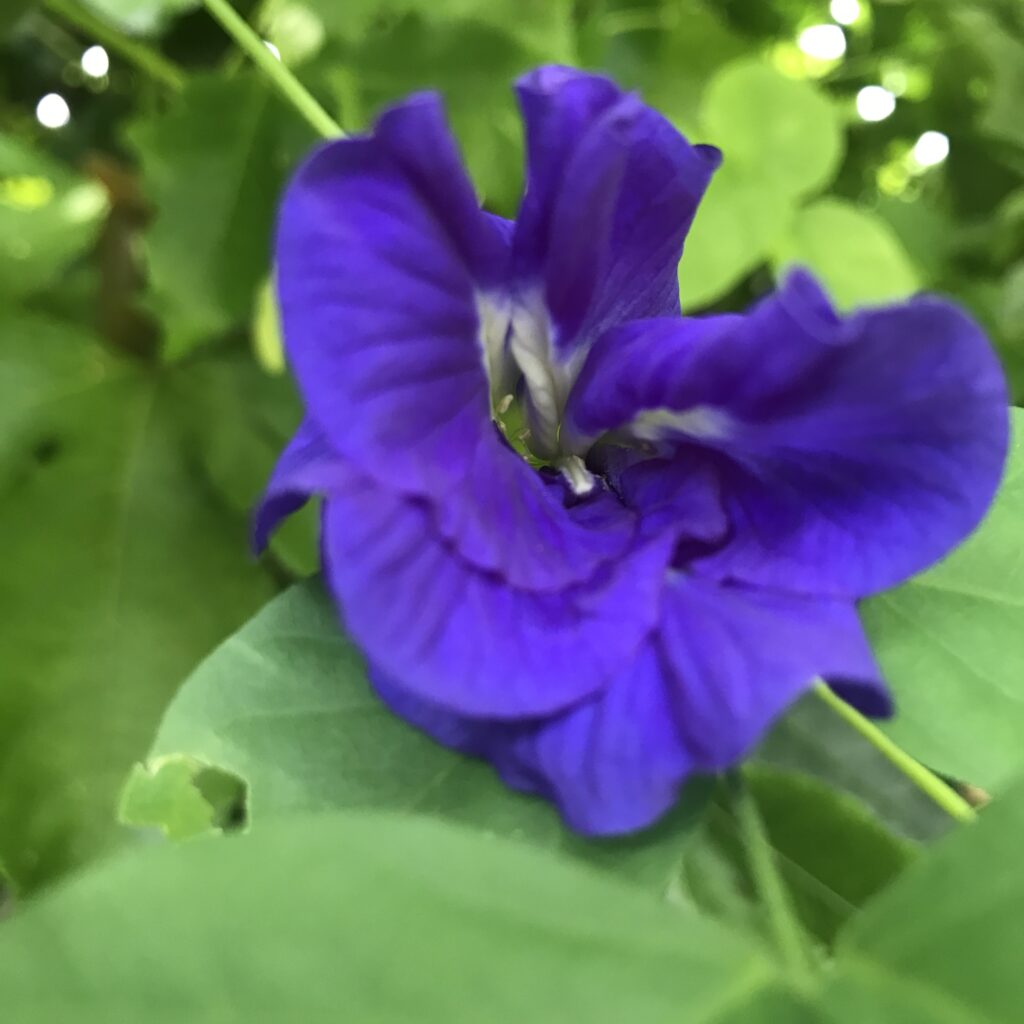
Here are the steps to ensure your garden bed is ready:
Choosing a Location
Select a location that receives full sun. Blue Butterfly Pea Vine flourishes in bright sunlight, requiring at least 6-8 hours of direct sun per day.
Choose an area where the soil drains well but can retain some moisture. While the plant is somewhat drought-tolerant, it does best in soil that remains evenly moist without becoming waterlogged.
Blue Butterfly Pea Vine prefers well-drained soil rich in organic matter. The ideal soil type is loamy and slightly acidic to neutral in pH. If necessary, amend your soil with compost or well-rotted manure to enhance its nutrient content and texture.
Since this is a climbing vine, ensure that the location allows for the installation of a trellis, fence, or another form of support. The plant will need something to climb on as it grows.
Preparing the Garden Bed
Start by clearing the chosen area of weeds, debris, and large stones.
If compacted, loosen the soil gently with a garden fork.
Add a layer of organic matter such as compost or aged manure. This step improves soil fertility and helps with moisture retention.
Set up trellises or other support structures at this stage. Position them firmly in the ground to provide stable support for the growing vines.
Direct Sowing Blue Butterfly Pea Vine
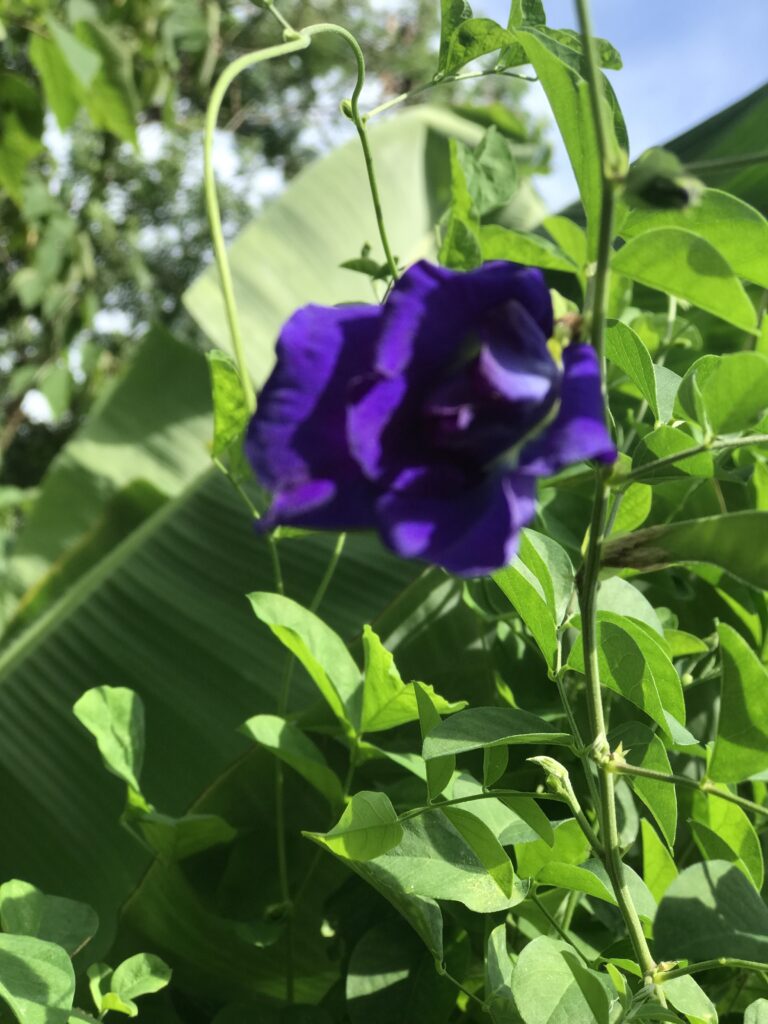
If you choose to direct sow the seeds, follow these instructions to ensure successful planting:
- Sow the seeds about 1/2 inch deep in the soil. This depth allows the seeds to be sufficiently covered to retain moisture while being close enough to the surface for successful germination.
- Space the seeds or small clusters of seeds about 4 to 6 inches apart. As they grow, Blue Butterfly Pea Vines will need space to spread out and climb.
- Water the planted area gently but thoroughly immediately after sowing the seeds. The soil should be moistened to ensure the seeds have the necessary hydration to start the germination process.
- Once the seedlings emerge and are a few inches tall, thin them to ensure that each plant has enough space to grow. Leave the strongest plants, spacing them about 12 to 18 inches apart. Adequate spacing is vital for proper air circulation and growth.
- After thinning, apply a layer of organic mulch around the seedlings. Mulch helps retain soil moisture, keeps the root area cool, and suppresses the growth of weeds. Suitable materials include straw, shredded leaves, or bark mulch.
Since Blue Butterfly Pea Vine is a climbing plant, provide a trellis or similar support structure near each plant. This can be done at the time of sowing or soon after the seedlings emerge. The support will give the vines something to climb on as they grow, which is essential for their natural growth habit and health.
When to Transplant Your Blue Butterfly Pea Vine Starter Plants
Determining the right time to transplant Blue Butterfly Pea Vine starter plants into the garden or larger containers is crucial for their successful growth. Here’s how to tell when they’re ready:
Size and Development
Your Blue Butterfly Pea Vine starters are ready for transplanting when they reach a height of about 8 to 10 inches and have developed several sets of true leaves. True leaves are the leaves that appear after the initial, simpler seed leaves (cotyledons) and are an indication of a well-developed, healthy plant.
Root Growth
Check the root development of the starter plants. If the roots have filled their current container but are not overly crowded or circling extensively, it’s a good time to transplant. Overly tangled roots can indicate that the plant is becoming pot-bound and needs more space to continue growing.
Overall Health
Assess the overall health of the plants. They should appear vigorous and robust, with a bright green color and sturdy stems. Avoid transplanting if the plants are showing signs of distress, such as yellowing leaves or wilting, as these can indicate either a nutrient deficiency or overwatering.
Adaptation Period
When moving the plants outdoors, ensure that you’re past any last frost date and daily temperatures exceed 75°F.
If growing them in containers, be prepared to bring them indoors during any cold snaps, as they become quite unhappy below 50°F, especially when young.
This step is crucial to reduce transplant shock and improve the plants’ chances of thriving in a new environment.
Once these criteria are met, your Blue Butterfly Pea Vine plants are ready to be moved to their next stage of growth, whether that be into a garden bed or into larger containers for continued development.
Planting Out Blue Butterfly Pea Vine
Transplanting Blue Butterfly Pea Vine starters into your garden can be a fulfilling gardening activity. Here’s how to plant them out effectively:
Depth
When planting out your starters, make sure the hole is just deep enough to accommodate the root ball. Plant the starters at the same depth they were growing in their containers. This helps prevent the stem from being buried too deeply, which can potentially cause rot.
Spacing
Space the plants about 18 to 24 inches apart. Blue Butterfly Pea Vine can grow quite vigorously, and this spacing ensures that each plant has enough room to spread and receive adequate sunlight and air circulation.
Mulching
After planting, apply a layer of organic mulch around the base of each plant. Mulch helps to retain soil moisture, keeps the soil temperature stable, and suppresses weed growth. Suitable materials include straw, shredded bark, wood chips, or leaf mold.
Watering In After Planting
Water the plants thoroughly immediately after planting. This initial watering helps to settle the soil around the roots and provides the moisture necessary for the plants to start establishing themselves in their new location. Maintain consistent moisture, especially during the early stages of growth and in dry weather conditions.
Supporting
As a climbing vine, Blue Butterfly Pea Vine requires a structure to climb. Install a trellis, fence, or other support systems at the time of planting or shortly after. Gently guide the young vines onto their support to encourage upward growth. This support is essential for the health and aesthetic display of the plant.
Planting Blue Butterfly Pea Vine Starters in Containers
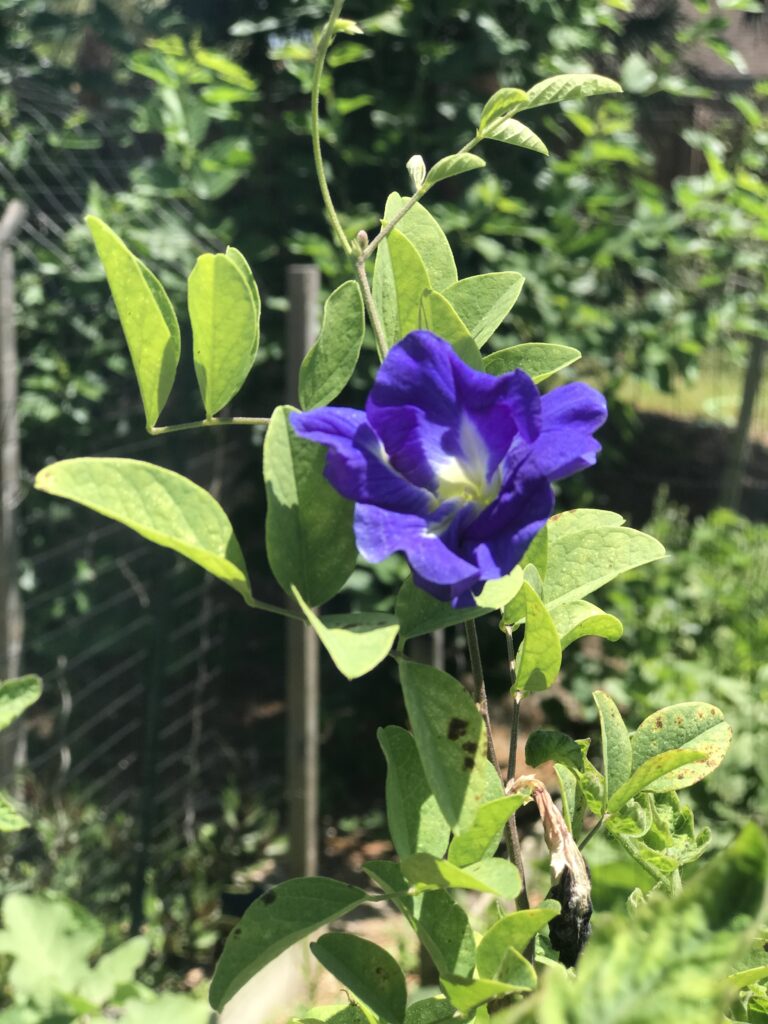
Planting Blue Butterfly Pea Vine in containers is an excellent option for gardeners with limited space or those in cooler climates. Here’s a step-by-step guide to ensure successful container planting:
Choosing the Right Size of Container
Select a container that is at least 12 to 18 inches deep and wide to accommodate the plant’s root system. Larger containers will provide more room for growth and reduce the frequency of watering.
Remember that the larger your container, the bigger your Blue Butterfly Pea Vine plant can grow.
Type of Potting Soil
Use a high-quality potting soil that drains well. A mix designed for containers or raised beds is ideal. You can enhance the potting mix with compost or a slow-release fertilizer to ensure it has enough nutrients.
Depth of Planting
Plant your Blue Butterfly Pea Vine starters at the same depth they were in their starter containers. Avoid planting them deeper than they were previously growing, as this can lead to stem rot.
Spacing in the Container
If planting more than one vine per container, space them approximately 12 inches apart. This spacing allows each plant enough room to grow without overcrowding.
Mulching
Apply a thin layer of organic mulch on the soil surface in the container. This helps retain moisture and keeps the roots cool. Suitable mulching materials include shredded bark, coco coir, or straw.
Watering In
Water the plant thoroughly after planting. Ensure the soil is moist but not waterlogged. Container plants often require more frequent watering than garden-planted ones, especially during hot or windy weather.
Providing a Trellis
Since Blue Butterfly Pea Vine is a climber, it needs support. Install a small trellis or stake in the container at planting time. Ensure the support is sturdy enough to hold the plant as it grows. Guide the vine gently onto the trellis as it begins to climb.
Caring for Blue Butterfly Pea Vine Plants
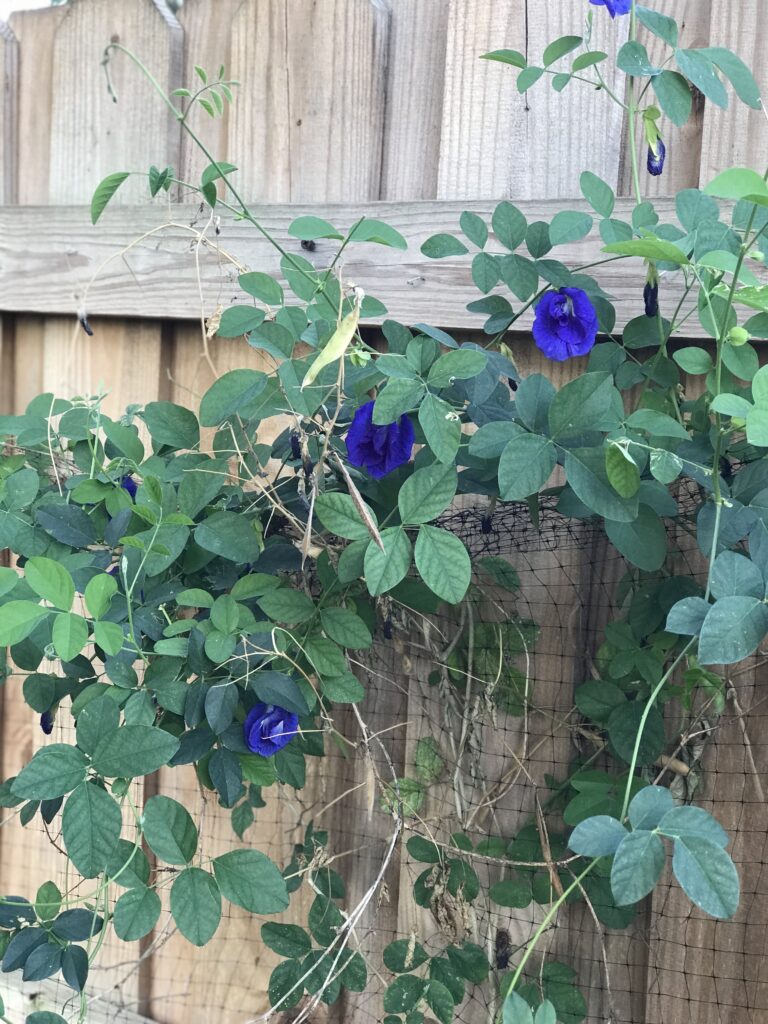
Caring for Blue Butterfly Pea Vine involves a combination of adequate watering, regular feeding, vigilant weeding (for ground plants), and appropriate support and pruning. This vine is relatively easy to care for but does need regular attention to thrive and produce its distinctive flowers.
Watering
Water the plants deeply once a week, allowing the soil to dry out slightly between waterings. Adjust the frequency based on rainfall and temperature.
Plants in containers may require more frequent watering, especially in hot or windy conditions. Check the soil moisture regularly and water when the top inch feels dry.
Feeding
Feed your vine with a balanced, all-purpose fertilizer in early spring and again in mid-summer.
For container plants, use a liquid fertilizer every 4-6 weeks during the growing season, as nutrients in potting soil can deplete faster.
Weeding
Keep the area around the plant free from weeds to reduce competition for nutrients and water. Mulching can help suppress weed growth.
Supporting
Provide a trellis or support structure for your vine to climb on, both in the ground and in containers. As the vine grows, gently tie it to the support with soft ties or plant tape. Regularly check and adjust the ties as the plant grows.
Pruning
Prune your Blue Butterfly Pea Vine to maintain shape and encourage branching. In early spring, trim off any dead or damaged parts. Throughout the growing season, pinch back the tips of the vines to promote bushier growth. Container plants may require more frequent pruning to manage their size and shape.
Tips and Tricks for Growing Blue Butterfly Pea Vine
Here are some tips and tricks for growing Blue Butterfly Pea Vine from Seed.
Temperatures
Blue Butterfly Pea Vine requires heat to germinate, and a temperature of 80°F is perfect for sprouting seeds. Purchase a heat mat if necessary, or sow when the temperatures are most accommodating.
Pinching Back
Blue Butterfly Pea Vine benefits from pinching back, which encourages a bushier growth habit. To pinch back, use your fingertips or pruning shears to remove the tip of a vine, just above a leaf node. This can be done when the plant is about 10 inches tall. Regular pinching back throughout the growing season helps promote fuller, more robust plants.
Support and Tying Up
Since this is a climbing plant, it requires support to thrive. Install trellises, stakes, or other structures for the vines to climb. As the plant grows, gently tie it to the support using soft plant ties, ensuring the ties are not too tight to avoid damaging the stems.
How to Harvest Blue Butterfly Pea Vine Flowers
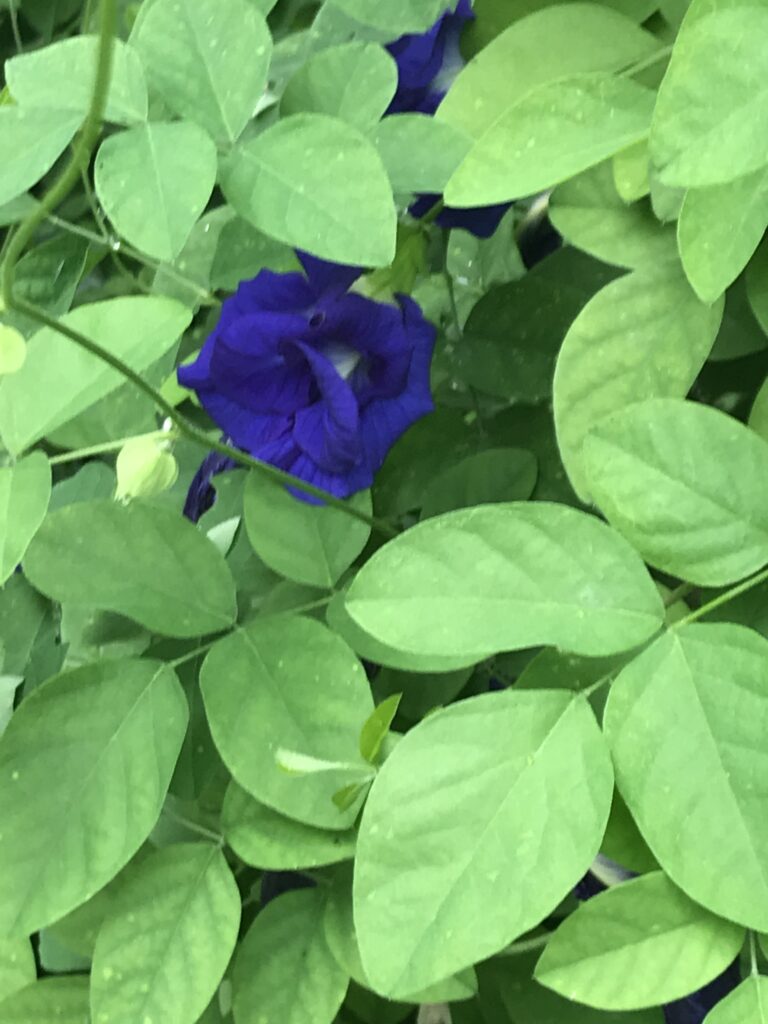
Harvesting Blue Butterfly Pea Vine flowers for tea is one reason given for cultivating this plant.
The best time to harvest flowers is in the morning when they are freshly opened. This is when they are most vibrant and have the highest concentration of beneficial compounds.
Look for flowers that are fully open and healthy-looking. Avoid any that are fading, discolored, or damaged.
Gently pluck the flowers from the vine. Be careful not to damage the vine or nearby buds that are yet to open.
Although not always necessary, you can lightly rinse the flowers to remove any dust or small insects.
Lay the flowers out on a clean cloth or a drying screen in a well-ventilated area out of direct sunlight. Allow them to dry completely, which may take several days depending on humidity levels.
You can also use the lowest setting on a dehydrator, which should remove enough moisture for long-term storage in 12 to 24 hours.
Once dry, store the flowers in an airtight container, away from direct light and moisture. They can now be used to make tea.
How to Make Blue Butterfly Pea Vine Tea
Blue Butterfly Pea Vine tea is known for its vibrant color and mild flavor. Here’s how to brew it:
Start by boiling water. For one cup of tea, you’ll need about 8-10 dried Blue Butterfly Pea flowers.
Place the dried flowers in a teapot or cup. Pour the hot water over the flowers and let them steep for about 5 to 10 minutes. The longer you steep, the deeper the blue color of the tea.
Strain the tea to remove the flowers. The tea will have a beautiful blue hue.
You can add honey, lemon, or ginger to enhance the flavor. Adding lemon juice will change the tea’s color from blue to purple due to its acidity.
How to Harvest Blue Butterfly Pea Vine Seeds
Collecting seeds from your plants allows you to begin growing Blue Butterfly Pea Vine from seed to share with others or add more to your fence or arbors.
- After the flowering period, the plant will produce seed pods. Wait for these pods to turn brown and dry out on the plant.
- Carefully cut the pods from the vine with scissors or pruning shears.
- Place the pods in a warm, dry area to further dry out.
- Once the pods are completely dry, gently open them to extract the seeds.
- Store the seeds in a cool, dry place in a paper envelope or airtight container until you’re ready to plant them.
What to Expect from Blue Butterfly Pea Vine Over Winter
Understanding how Blue Butterfly Pea Vine behaves over the winter months is important for ensuring its survival and thriving growth in the following season. Here’s what to expect and how to care for it during winter, depending on your climate:
In USDA Hardiness Zones 9-11
In these warmer zones, Blue Butterfly Pea Vine may remain evergreen and continue growing throughout the winter, although growth may slow down.
Minimal care is needed in these regions during winter. However, if a rare cold snap occurs, provide some protection with mulch or frost cloth.
In Zones 3-8 (and Cooler Parts of Zone 9)
Blue Butterfly Pea Vine will not survive freezing temperatures outdoors. In these zones, it’s typically grown as an annual or moved indoors for the winter.
Before the first frost, container plants should be brought indoors to overwinter. Keep them in a sunny window and reduce watering, allowing the soil to dry out slightly between waterings.
Overwintering Indoors
When overwintering indoors, place the plant in a location that receives plenty of light, such as a south-facing window.
Reduce watering and cease fertilizing during the winter months, as the plant will enter a period of dormancy or slowed growth.
Prune back any long or leggy growth to encourage bushier, more compact growth in the spring.
Pruning Before Spring
As winter ends, and before new spring growth begins, prune the vine to remove any dead or damaged growth and to shape the plant.
Preparing for Spring
Gradually reintroduce the plant to outdoor conditions in the spring after the danger of frost has passed. This process, known as hardening off, helps the plant acclimate to outdoor conditions.
By understanding and accommodating the Blue Butterfly Pea Vine’s needs over winter, you can help ensure its health and vigor for the next growing season.
Growing Blue Butterfly Pea Vine from Seed to Bloom
Growing Blue Butterfly Pea Vine from seed to bloom is a rewarding endeavor that offers both beauty and practical benefits. By following the guidelines for seed starting, transplanting, and ongoing care, you can successfully cultivate this stunning vine in your garden or containers.
